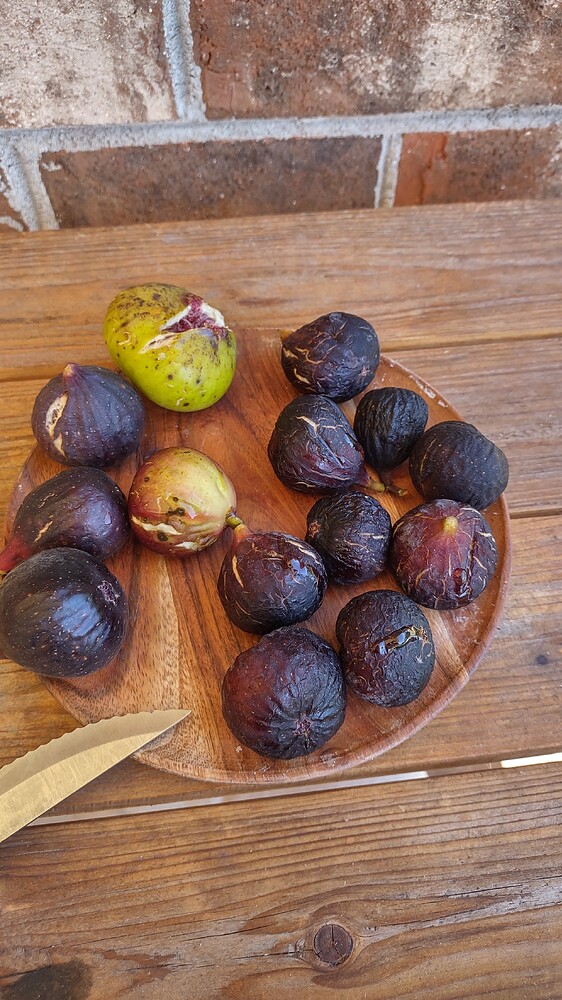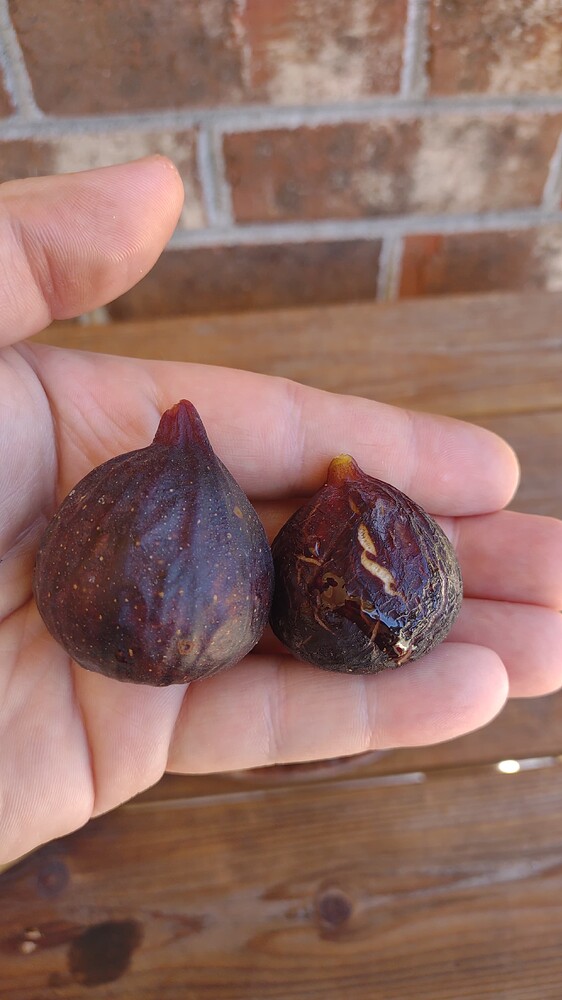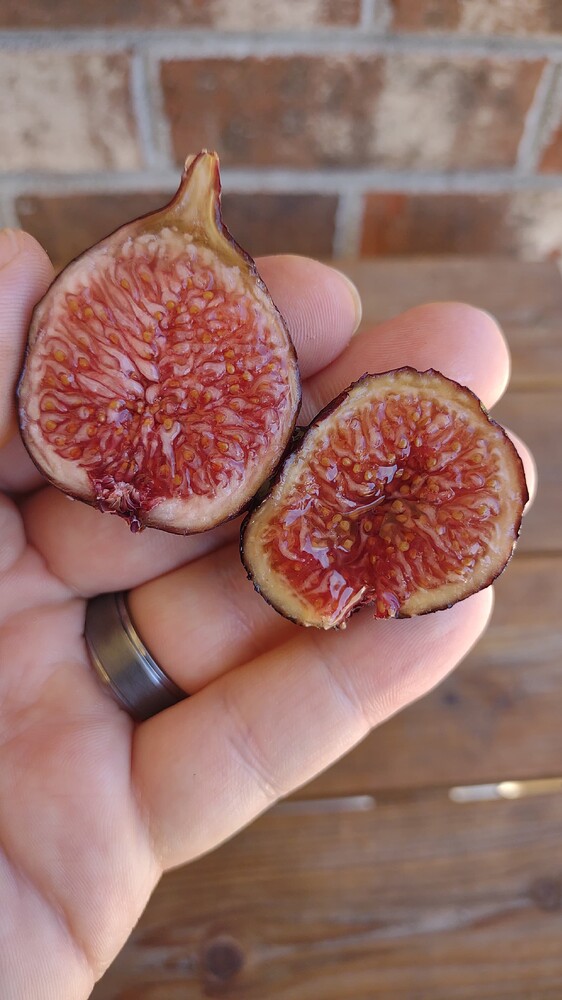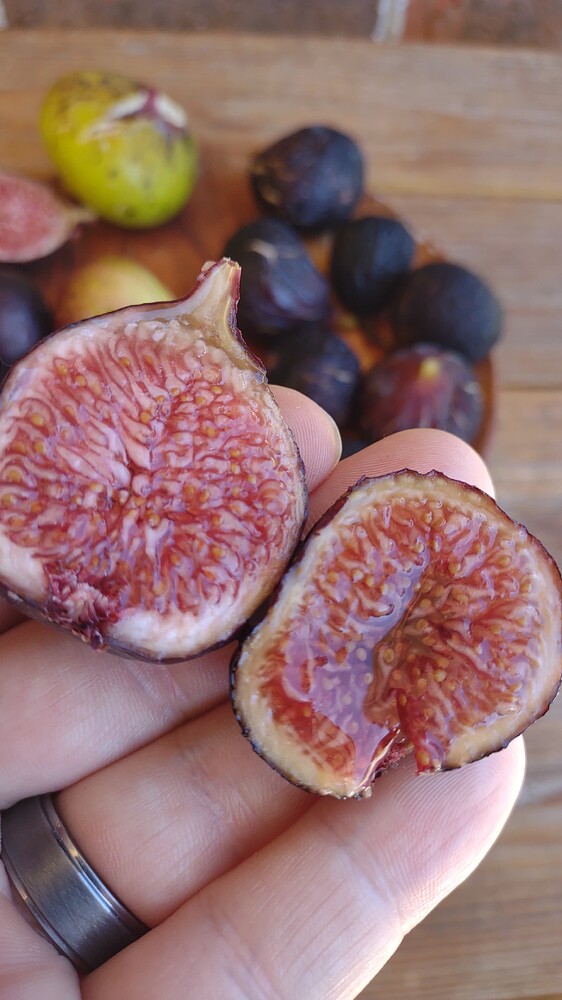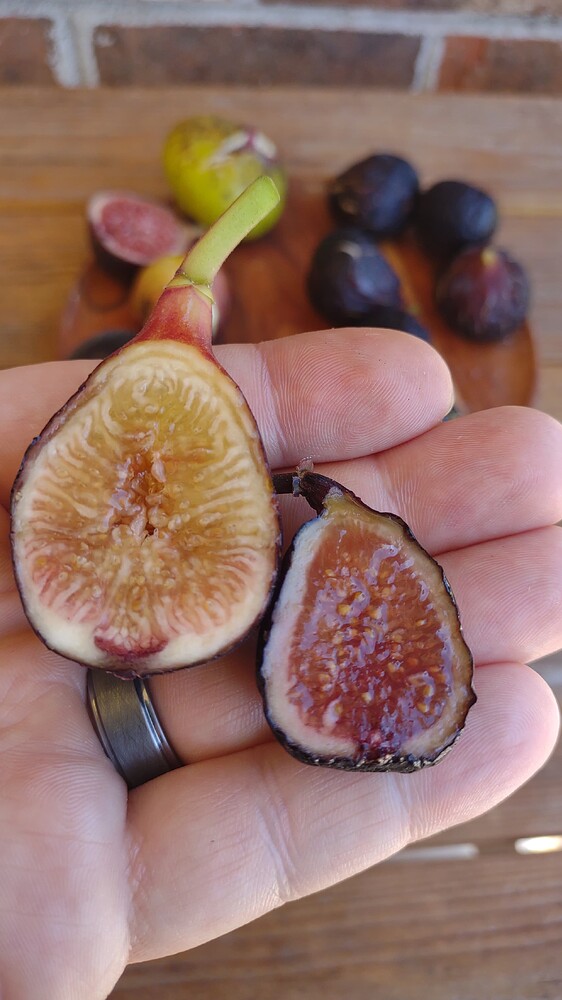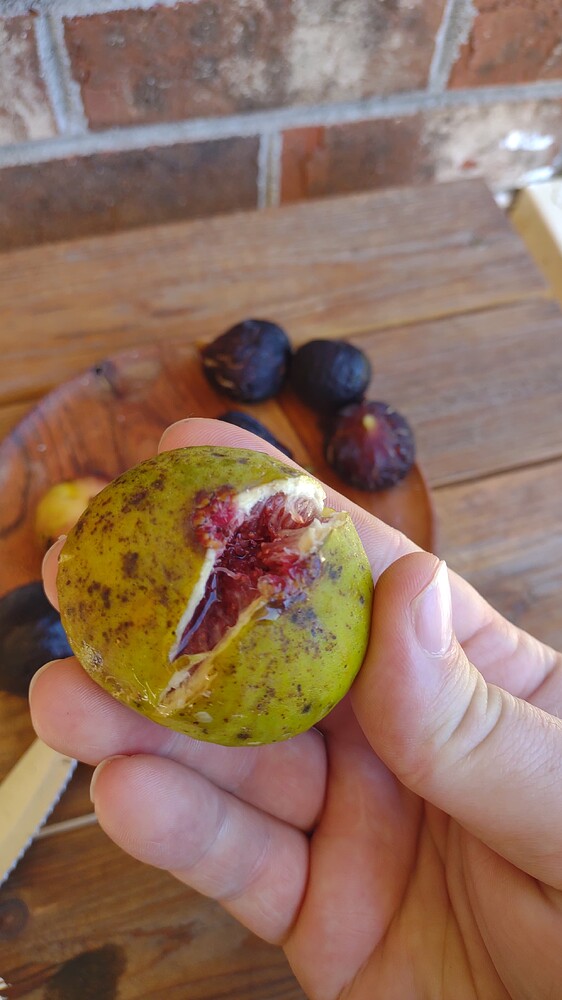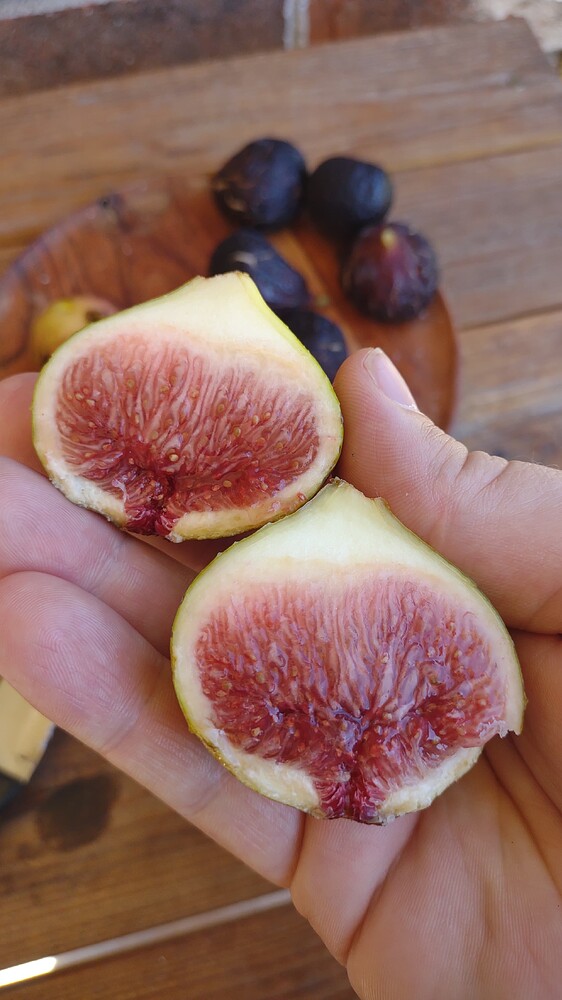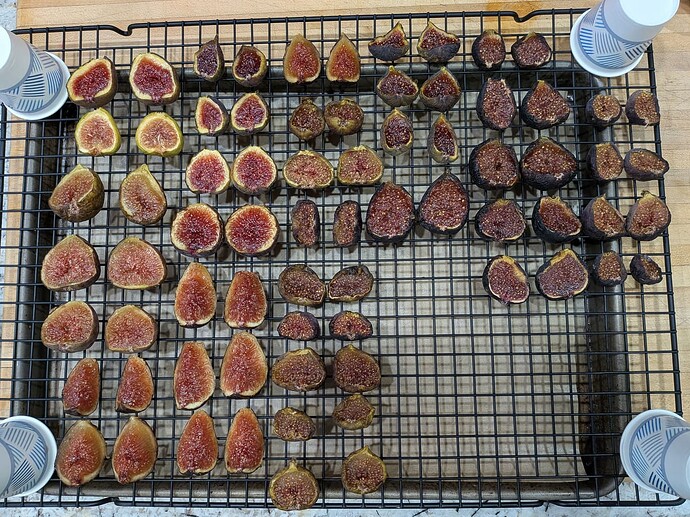This topic came up in a general fig thread recently and I thought I’d break it out into its own discussion.
Placing whole figs in the refrigerator is something I’ve only recently started doing, but so far, I’m a fan. Doing so is looking like a decent method for achieving the following:
- Ripening, insofar as figs can ripen off the tree anyway
- Drying and concentrating, not to the extent of other methods, but with fewer drawbacks
- Storing, again, not as effective as other methods, but probably with fewer drawbacks
My first and foremost reason for trying refrigerating figs was that it’s incredibly simple and low-effort. Placing whole figs on a wire rack and in the fridge is about the easiest “process” worth being called a process. That’s a major plus in my book, as I’ve no patience for value-added steps that add less value than the value of the time they consume…
As for ripening, this is highly debatable because just what a “ripe” fig is is a contentious topic and there’s an enormous amount of snobbery out there. For my purposes, I’m willing to call “ripening” what happens when a fig that is freely dripping latex and is poorly colored and not sweet becomes palatable, losses the latex flavor and burn, gains some amount of color and flavor development, and sweetens up. A purist won’t call such a fig ripe, of course, but being a purist probably also means losing many or a majority of figs to cracking, splitting, spoiling, bugs, and critters trying to hit that elusive “dried on the tree” stage. I’m all for recognizing how incredible such figs are, but that’s not the target I want to aim for, it’s the bonus I hope for when weather, bugs, animals, humans, and figs all work together in rare and fragile harmony.
Long story short, a day or three in the fridge, from what I can tell so far, can turn a spitter fig into an eater, and can turn a partially ripe but damaged with no hope of ripening on the tree fig into a pretty decent mostly ripe fig. That’s a win, even if imperfect.
As for drying and concentrating, the tests I’ve done so far suggest that drying in the fridge for a week or two really does work. I don’t know how dry I could get them as I haven’t tried more than about two weeks, and this year I probably won’t have enough to try longer than that, but regardless I doubt they’d ever get as dry as in a dehydrator. Which is fine, because dehydrated figs are mediocre at best IMHO. Unlike dehydrated figs, fridge-dried figs don’t have that tough texture, the off colors, and to my mind most importantly, that strong “figgy” or “fig newton” flavor. From what I can tell so far, that “figgy” flavor seems in part due to oxidative browning. It’s the flavor of rancid figs, basically. Sometimes you want that kind of oxidative flavor, like in some sherries or in tea or cured tobacco, but I’d argue that, insofar as it is oxidative browning, then in figs it’s a defect. Fridge figs seem to have it some (I think it happens most when there’s lots of cracking, tentatively it seems like the flavor tends to develop in the inside of the skin rather than the pulpy middle so an open eye isn’t as much an issue), but vastly less than dehydrated figs.
The water loss though is still substantial, and there’s a big size difference after a few days even. That water loss contributes to a lot of concentrated flavor. The texture of the figs changes a lot too. Ripening makes the pulp more pulpy rather than having the individual “vesicles” less ripe figs have, and the seeds are perhaps crunchier. In what I presume is due to enzymatic action that doesn’t have time to occur during dehydration or is inactivated at higher temperatures, the sugars increase a lot and more of the ripe flavors develop. I think a similar process is also breaking down the cellular structure, because fridge figs are very soft. Osmosis pulls water into the sugary center of the figs and lots of syrup collects.
It’s all great, and it’s not something that I’ve seen dehydrated figs do.
Finally, there’s storage. Once dried down, I assume the figs could be placed in a container for long term storage, though at some point they’d probably mold. But I don’t see why you couldn’t get a few weeks or months of shelf-life out of them in the fridge, all the while preserving most of their flavor and texture. That’s in stark contrast to freezing or drying, where the texture is completely changed.
Anyway, those are my thoughts and conclusions so far.
I’ll post below some pictures of the test batch that I left in for about two weeks.
